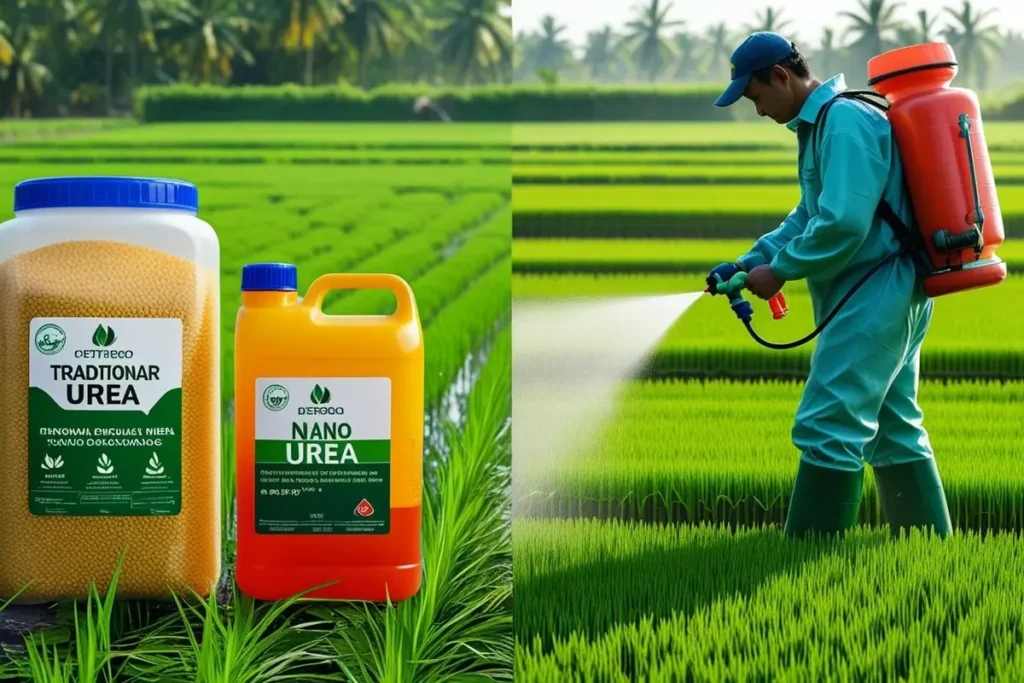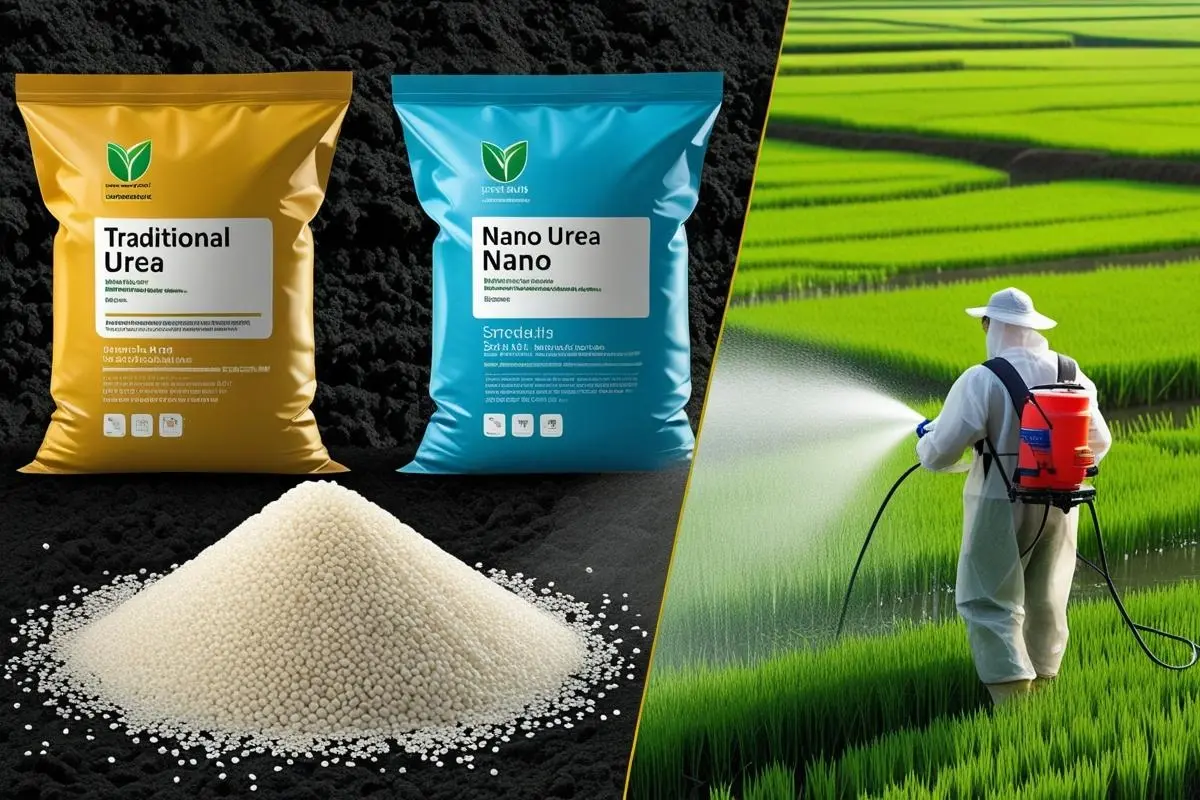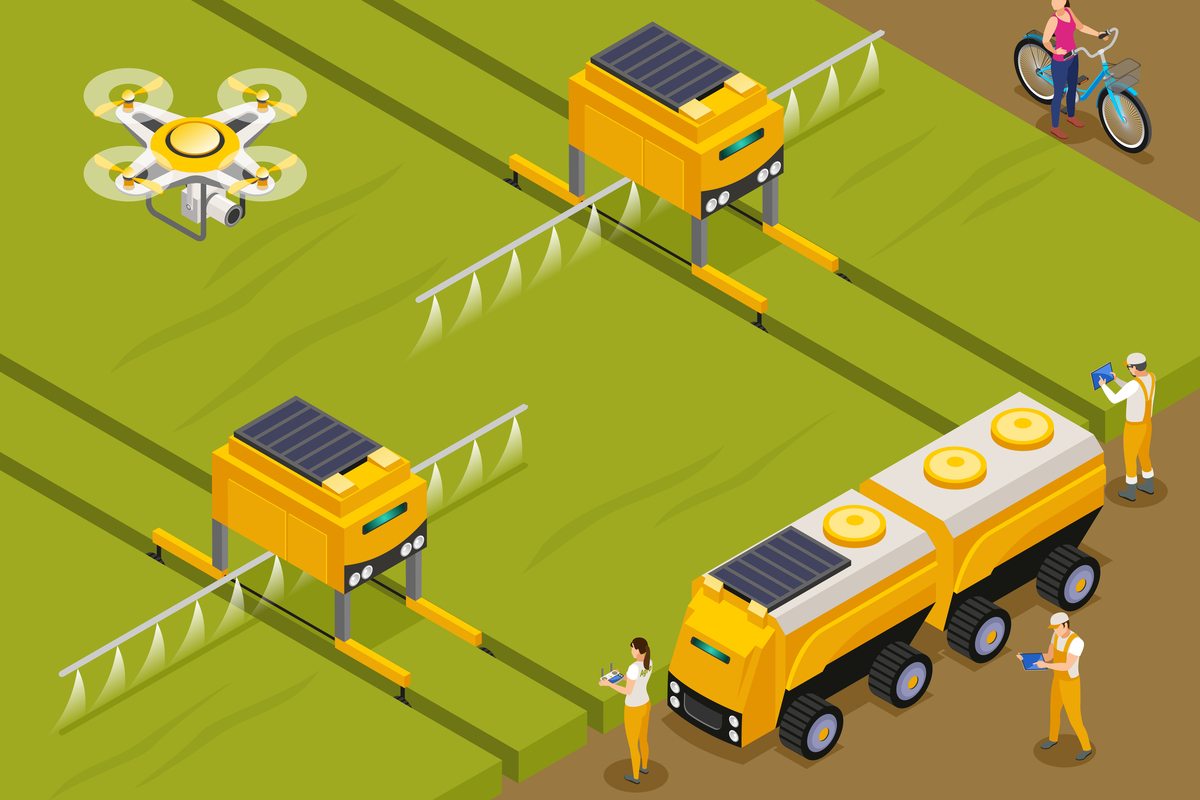Nano urea is an innovative fertilizer that has gained significant attention in recent years due to its potential to revolutionize modern agriculture. As a nano-scale liquid fertilizer, it promises improved nutrient efficiency, reduced environmental impact, and lower application costs compared to traditional urea. However, despite these benefits, it’s important to carefully consider both the advantages and disadvantages of nano urea in agriculture to understand its overall effectiveness and limitations in real-world farming scenarios.
Table of Contents
Advantages of Nano Urea in Agriculture

1. Enhanced Nutrient Efficiency
Nano urea contains nitrogen particles at the nanoscale, which allows for better absorption by plant leaves compared to conventional urea. Due to its small particle size and higher surface area, nano urea is more efficiently utilized by plants, reducing nitrogen losses through leaching, volatilization, and runoff. This leads to improved nitrogen use efficiency, meaning crops receive the exact amount of nutrients they need, improving overall productivity.
2. Reduction in Fertilizer Usage
One of the biggest advantages of nano urea is that a small quantity can replace a much larger volume of conventional urea. For instance, one 500 ml bottle of nano urea can replace a 45 kg bag of traditional urea. This drastically reduces the total fertilizer requirement per hectare, which helps lower input costs for farmers and reduces the environmental footprint caused by excessive urea application.
3. Environmentally Friendly
Traditional urea contributes significantly to environmental pollution due to nitrogen runoff and greenhouse gas emissions. Nano urea, being more efficiently absorbed and applied in much smaller doses, significantly reduces these issues. As a result, it minimizes soil and water contamination and contributes to sustainable farming by promoting eco-friendly agricultural practices.
4. Improved Crop Yield and Quality
Several field studies have shown that nano urea can enhance crop yield by ensuring balanced and timely nitrogen supply during critical stages of plant growth. It not only boosts biomass production but also improves the quality of produce, such as grain size, protein content, and nutritional value. Healthier plants and better-quality crops result in higher market value for farmers.
5. Cost-Effective for Farmers
Although nano urea may seem expensive per liter, the actual cost per application is much lower compared to conventional urea, because only a small quantity is needed. Reduced transportation, handling, and storage costs further increase its economic advantage. This makes nano urea a financially smart choice for small and marginal farmers looking to cut down on cultivation expenses.
6. Ease of Application
Nano urea is applied as a foliar spray, which is simple and can be done using commonly available knapsack sprayers. This ease of use eliminates the need for manual soil application, saving time and labor. Additionally, it can be mixed with other agrochemicals, allowing farmers to apply fertilizers and pesticides in a single operation, enhancing farm efficiency.
7. Supports Climate-Resilient Agriculture
In regions facing erratic rainfall or climate stress, nano urea helps maintain crop nutrition even when soil conditions are not ideal for nutrient uptake. Since it is sprayed directly onto the leaves, crops can still receive vital nitrogen during dry spells or waterlogged conditions. This improves plant resilience against climate-induced stress.
Disadvantages of Nano Urea in Agriculture

1. Limited Field Performance Data
Although nano urea has shown promising results in laboratory and controlled field trials, there is still insufficient data from long-term, large-scale real-world farming situations. Many farmers are hesitant to rely fully on nano urea due to the lack of extensive research across different soil types, climatic conditions, and cropping systems. This uncertainty makes it difficult to determine its consistent effectiveness in actual agricultural settings.
2. Not a Complete Replacement for Conventional Urea
Nano urea is designed to supplement, not completely replace, conventional urea. While it improves nitrogen use efficiency, it may not fulfill the entire nitrogen requirement of crops, especially high-nutrient-demanding crops like wheat, paddy, and maize. As a result, farmers still need to rely on traditional urea or other nitrogen fertilizers to meet the crop’s full nutrient needs, making it less convenient.
3. Storage and Handling Issues
Nano urea, being a liquid fertilizer, requires careful storage to prevent degradation and maintain stability. It must be kept in a controlled environment, away from sunlight and extreme temperatures, which may not be feasible for farmers in rural areas. Mishandling can lead to product spoilage, reducing its effectiveness and causing financial loss.
4. Limited Availability and Higher Cost per Unit
Nano urea is still relatively new in the market, and its availability is limited in many regions. Farmers often find it hard to access the product locally. Moreover, though the per-dose cost is low due to reduced quantity required, the cost per unit of nitrogen is actually higher than traditional urea, which can be a concern for budget-conscious farmers.
5. Uncertainty in Environmental Impact
While nano urea is promoted as environmentally friendly due to reduced nitrogen runoff, the long-term effects of nanomaterials in soil and water are not fully known. There are concerns about nanoparticle accumulation in ecosystems, soil microbiota disruption, and unknown consequences for beneficial organisms. These environmental uncertainties require further investigation.
6. Lack of Multi-Nutrient Support
Nano urea provides only nitrogen and does not supply other essential macronutrients like phosphorus and potassium or micronutrients such as zinc and boron. Farmers still need to apply other fertilizers to ensure balanced crop nutrition. This adds to the overall input cost and limits the efficiency of nano urea as a standalone solution.
Conclusion
In conclusion, nano urea represents a significant step forward in sustainable agricultural practices by offering higher nitrogen use efficiency, reduced fertilizer wastage, and potential environmental benefits. However, despite its innovative promise, it is not without limitations. For farmers, especially in developing regions, the decision to adopt nano urea should be based on proper guidance, accessibility, and a balanced approach that combines traditional practices with emerging technologies. As research progresses and awareness increases, nano urea may play a crucial role in shaping the future of modern, eco-friendly agriculture.







